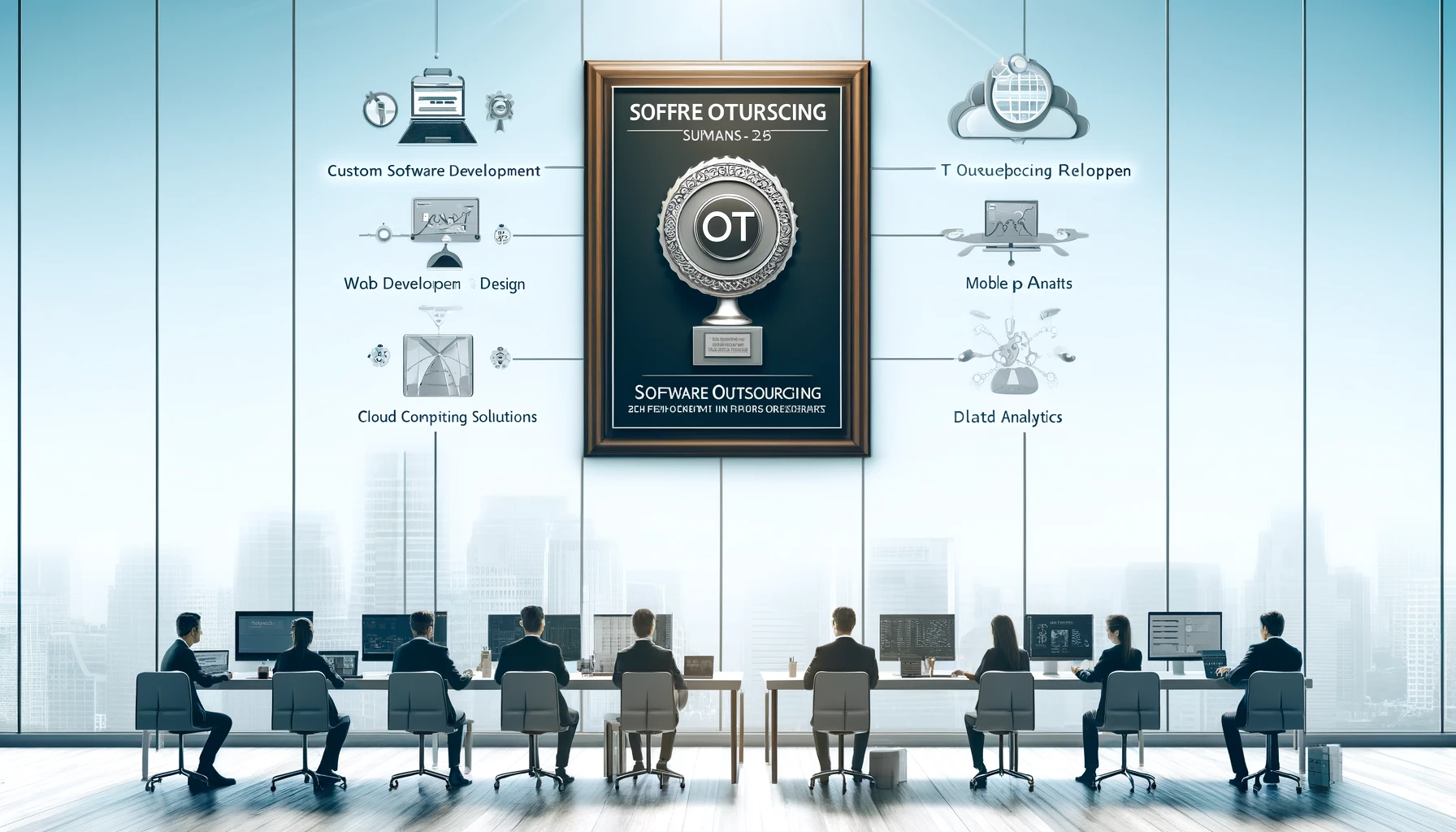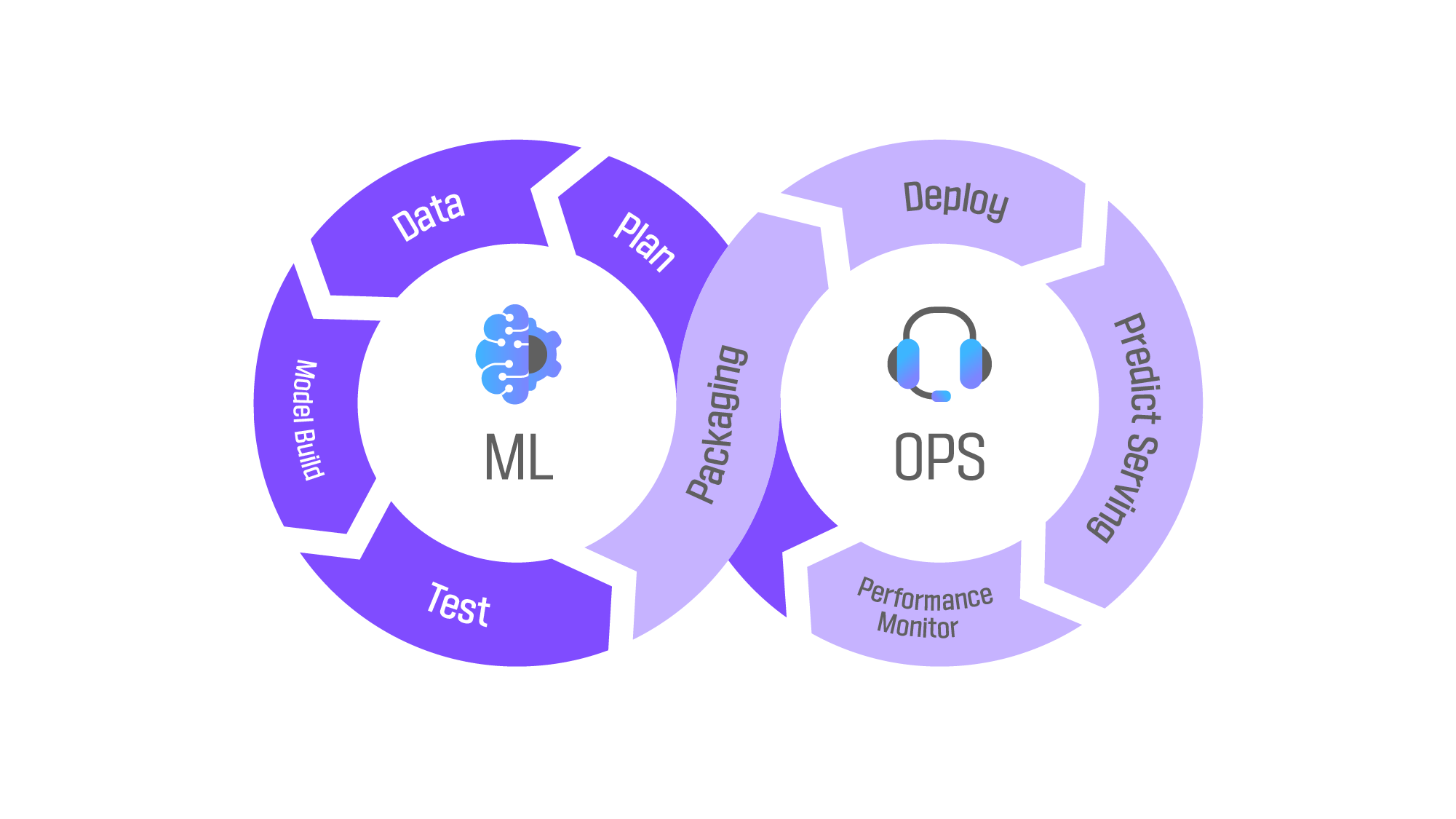If you are considering the development of a web or mobile application for your company, it is important to understand the key tools that developers utilize in such projects. This is because the technology stack employed can significantly impact both the speed of application development and the ability to scale the product in the future. Additionally, it can influence the cost your company incurs for project support and maintenance.
To streamline the process of selecting a suitable technology stack for your web or mobile application in 2022, we have compiled an overview of the most essential tools utilized by popular applications such as Netflix and Airbnb. By referring to this guide, you can save time and effort that would otherwise be spent on searching for the ideal tech stack for your project.
What does a Tech Stack mean?
A Tech Stack refers to the collection of software tools utilized by developers to construct an application, including software applications, frameworks, and programming languages that are responsible for implementing various aspects of the program.
In terms of its composition, the tech stack is comprised of two essential components – the front-end or client-side and the server-side or back-end.
Web applications resemble websites that can be accessed through browsers, allowing users to utilize them without the need for downloading them onto their devices. The technology stack for web applications leverages system resources, necessitating the consideration of a combination of front-end and back-end technologies to develop a web product.
In contrast, developers construct native apps designed for a specific platform or environment, where their code and data cannot be utilized elsewhere. To access these applications, users must download them from the app marketplace.
Therefore, when constructing a native app, it is important to consider the use of platform-oriented technologies and tools, such as Swift and Objective-C for iOS and Java or Kotlin for Android app development.
Let us delve further into the tech stacks required for both web and mobile app development processes.
Tech stack for a web software
The back-end technology stack is responsible for ensuring the smooth operation of the internal workings of an application or website. It is particularly crucial if the site features anything other than simple, static HTML-coded pages. The tools that developers use for the back-end stack include various programming languages such as Python, PHP, and JavaScript, frameworks like Ruby on Rails, Flask, Django, Swift, or Objective-C, databases such as MongoDB and MySQL, and server providers like Apache, Nginx, and others.
In contrast, the front-end technology stack determines the user’s experience when they interact with an application or website. Thus, the primary focus of the front-end stack is to provide an accessible user interface, a convenient user experience, and clear internal structures. The appropriate technology stack for the front-end or client-side of web software consists of HTML, CSS, and JavaScript.
HTML is responsible for organizing and placing data on the page, serving as the backbone of the front-end stack. CSS is responsible for presenting the data, including features such as colors, fonts, background, and layout peculiarities. If interactive features are required, developers can choose JavaScript, which can be controlled via libraries such as jQuery, React.js, or Zepto.js, integrated into frameworks like Ember, Backbone, or Angular.
The tech stack for an iOS application
When developing an application for Apple devices, it is essential to find a team with expertise in Objective-C and Swift, the primary programming languages used in the iOS software development process. Additionally, developers may consider utilizing integrated development environments like JetBrains AppCode and Apple’s Xcode. Let’s examine the iOS technology stack in greater detail.
Objective-C is an established open-source framework that utilizes pointer concepts similar to C and C++ programming tools. It has been widely tested and is reliable, with numerous third-party frameworks available.
Swift, on the other hand, is a newer framework released in 2014 and is commonly used for iOS product development. Swift’s advantages include faster coding, better memory management, code reusability, and simpler debugging when compared to Objective-C. For instance, our team recently used Swift to develop Nioxin, a product for hairstylists. To learn more about this project, please follow the link.
Xcode is a powerful open-source development environment that integrates with the Cocoa and Cocoa Touch frameworks. It includes numerous developer tools for building apps using Objective-C. The Xcode software package comprises a text editor, compiler, and build system, enabling iOS developers to write, compile, debug, and submit their apps directly to the Apple app store.
Another iOS app code editor for Swift, Objective-C, C, and C++ is AppCode. Similar to Xcode, it offers faster coding, improved file navigation, editor customization, and other advantages.
The tech stack for an Android application
Java is an object-oriented programming language that is widely used for Android projects and is particularly popular among prominent companies such as Google and Yahoo. When developing an Android app, developers can use the Android SDK, which provides a plethora of libraries for data structure, graphics, mathematics, and networking to facilitate the creation of their application.
Kotlin is another programming language that has gained widespread popularity among Android app developers. It is commonly used for developing server-side applications, and one of its primary advantages is its ability to reduce the amount of necessary code. This feature is particularly useful in situations such as findViewByIds, one of the most frequently executed operations in Android development.
Android Studio is the official Integrated Development Environment (IDE) for developing Android projects. Android Studio provides developers with a variety of features, including code writing and debugging capabilities, to enhance their productivity and make the development process more efficient.
Important considerations about the technology stack in 2023
Scalability is a crucial aspect of software development, and the tech stack serves as its foundation. Although tweaks can be made according to operating results, the tech stack must have the necessary elements to support scalability.
There are two types of scalability: vertical, which involves adding more elements and data to an application, and horizontal, which involves the ability to run on more devices. Both types are equally important to make a product effective and successful.
Performance plays a critical role in software development and comes from two sources: business requirements and the technology’s capabilities. Operating characteristics and requirements depend on how fast the system can react and how many requests it can process at what rate.
Maintaining strict operating characteristics requirements is vital when choosing the tech stack since the entire operation must react to thousands of events at millisecond speed. Therefore, picking the most reliable option is essential.
Budgeting for the tech stack is one of the most challenging aspects of software creation. It demands significant financial resources, including hosting costs for product data, developers’ salaries, technology education and licensing fees, and subsequent maintenance costs. The trick is to manage to balance things out, avoid bloating, and overspending for the tech stack wherever possible.
Things to consider when hiring an app development company
Various types of applications require different tools and technologies. Web development projects, for example, involve a range of backend and frontend technologies and tools, whereas iOS and Android projects typically use a single coding language.
When seeking development services, it is not always necessary for you or your company to participate in the selection of technologies and tools. However, factors such as agility, operating characteristics, and costs are crucial to the success of your project. Therefore, do not hesitate to ask your developers about the technologies they plan to use to validate your business idea. They will provide you with a clear understanding of the pros and cons of the selected tech solutions.

We are delighted to announce that Slitigenz has been recognized as the top IT outsourcing firm by the esteemed SoftwareOutsourcing…

2022 sparked the AI revolution, 2023 saw it infiltrate the business world, and now, in 2024, we’re at the brink…

Hey there! Ever wondered what the buzz around MLOps is all about? Let’s break it down! MLOps, short for Machine…

Whisper represents a cutting-edge neural network model meticulously crafted by OpenAI, designed to adeptly tackle the complexities of speech-to-text conversions.…


14 Comments
Your comment is awaiting moderation.
buy amoxicillin online mexico: canadian pharmacy amoxicillin – amoxicillin 500mg capsule buy online
Your comment is awaiting moderation.
where to get generic clomid: where buy clomid without insurance – can i get clomid price
Your comment is awaiting moderation.
paxlovid buy: buy paxlovid online – paxlovid covid
Your comment is awaiting moderation.
https://doxycyclinedelivery.pro/# how to buy doxycycline online
Your comment is awaiting moderation.
https://clomiddelivery.pro/# get clomid no prescription
buying generic clomid without insurance how can i get clomid online where can i get clomid prices
Your comment is awaiting moderation.
purchase cipro: buy cipro without rx – ciprofloxacin 500 mg tablet price
Your comment is awaiting moderation.
ciprofloxacin over the counter: ciprofloxacin 500mg buy online – ciprofloxacin generic price
http://amoxildelivery.pro/# amoxicillin 500 mg cost
Your comment is awaiting moderation.
I needed to thank you for this wonderful read!! I certainly loved every little bit of it. I have got you saved as a favorite to look at new things you post…
Your comment is awaiting moderation.
http://doxycyclinedelivery.pro/# doxycycline over the counter uk
Your comment is awaiting moderation.
https://clomiddelivery.pro/# get cheap clomid without insurance
cipro online no prescription in the usa buy cipro online ciprofloxacin over the counter
Your comment is awaiting moderation.
cipro: cipro ciprofloxacin – ciprofloxacin 500mg buy online
https://clomiddelivery.pro/# where can i get cheap clomid price
Your comment is awaiting moderation.
where can i get amoxicillin: amoxicillin no prescription – amoxicillin without a doctors prescription
Your comment is awaiting moderation.
http://clomiddelivery.pro/# where to buy clomid without dr prescription
Your comment is awaiting moderation.
The very next time I read a blog, Hopefully it won’t disappoint me just as much as this one. I mean, Yes, it was my choice to read through, nonetheless I actually believed you would probably have something useful to talk about. All I hear is a bunch of moaning about something you can fix if you were not too busy looking for attention.
Your comment is awaiting moderation.
http://amoxildelivery.pro/# amoxicillin 50 mg tablets
can i purchase clomid generic clomid price how to get generic clomid no prescription
Your comment is awaiting moderation.
where can i buy cipro online: buy ciprofloxacin – buy cipro online
https://paxloviddelivery.pro/# Paxlovid buy online
Your comment is awaiting moderation.
https://amoxildelivery.pro/# amoxicillin capsules 250mg
Your comment is awaiting moderation.
can i get cheap clomid without rx: generic clomid no prescription – buying generic clomid without a prescription
http://ciprodelivery.pro/# buy ciprofloxacin over the counter
how to buy amoxycillin amoxicillin medicine over the counter amoxicillin 500mg capsules price
Your comment is awaiting moderation.
п»їpaxlovid: Paxlovid over the counter – Paxlovid over the counter
Your comment is awaiting moderation.
http://ciprodelivery.pro/# where can i buy cipro online
buy ciprofloxacin over the counter ciprofloxacin 500 mg tablet price buy cipro online without prescription
Your comment is awaiting moderation.
paxlovid for sale: paxlovid pharmacy – paxlovid cost without insurance
https://ciprodelivery.pro/# ciprofloxacin order online
Your comment is awaiting moderation.
http://amoxildelivery.pro/# amoxicillin 500mg capsule cost
Your comment is awaiting moderation.
amoxicillin 500mg capsules: amoxicillin generic brand – buy amoxicillin online uk
https://doxycyclinedelivery.pro/# doxycycline usa
doxycycline 50mg doxycycline cheapest uk how to get doxycycline 100mg
Your comment is awaiting moderation.
http://paxloviddelivery.pro/# п»їpaxlovid
where buy clomid prices where to get generic clomid without rx cheap clomid price
Your comment is awaiting moderation.
http://doxycyclinedelivery.pro/# doxycycline compare prices
Your comment is awaiting moderation.
purchase cipro: buy cipro – cipro online no prescription in the usa
http://ciprodelivery.pro/# cipro ciprofloxacin
Your comment is awaiting moderation.
cipro 500mg best prices: buy cipro online – where can i buy cipro online
Your comment is awaiting moderation.
It’s hard to come by experienced people in this particular subject, however, you sound like you know what you’re talking about! Thanks
Your comment is awaiting moderation.
After I initially left a comment I seem to have clicked the -Notify me when new comments are added- checkbox and from now on each time a comment is added I recieve four emails with the same comment. Perhaps there is a means you are able to remove me from that service? Appreciate it.
Your comment is awaiting moderation.
I was extremely pleased to discover this site. I need to to thank you for your time due to this wonderful read!! I definitely savored every bit of it and i also have you saved to fav to check out new stuff in your blog.
Your comment is awaiting moderation.
Howdy! This blog post could not be written much better! Looking through this post reminds me of my previous roommate! He continually kept preaching about this. I will send this article to him. Pretty sure he’ll have a good read. Thanks for sharing!
Your comment is awaiting moderation.
I needed to thank you for this good read!! I absolutely enjoyed every bit of it. I have you book marked to look at new stuff you post…
Your comment is awaiting moderation.
buy ciprofloxacin: cipro 500mg best prices – ciprofloxacin generic price
http://amoxildelivery.pro/# amoxicillin 500 tablet
can i purchase cheap clomid without rx where can i buy generic clomid without dr prescription buying generic clomid
Your comment is awaiting moderation.
http://clomiddelivery.pro/# can you buy generic clomid no prescription
Your comment is awaiting moderation.
https://ciprodelivery.pro/# buy generic ciprofloxacin
where can i buy generic clomid pill how can i get generic clomid without dr prescription where buy cheap clomid pill
Your comment is awaiting moderation.
Aw, this was an exceptionally good post. Spending some time and actual effort to make a top notch article… but what can I say… I procrastinate a lot and never seem to get nearly anything done.
Your comment is awaiting moderation.
where to get generic clomid without rx: where to get generic clomid pill – where to get generic clomid price
https://amoxildelivery.pro/# amoxicillin 500 mg cost
Your comment is awaiting moderation.
cipro pharmacy: cipro for sale – ciprofloxacin over the counter
Your comment is awaiting moderation.
https://amoxildelivery.pro/# buy amoxicillin canada
Your comment is awaiting moderation.
paxlovid covid: paxlovid price – п»їpaxlovid
http://doxycyclinedelivery.pro/# can you buy doxycycline
paxlovid cost without insurance paxlovid generic paxlovid india
Your comment is awaiting moderation.
Aw, this was a very nice post. Finding the time and actual effort to generate a really good article… but what can I say… I procrastinate a lot and don’t manage to get anything done.
Your comment is awaiting moderation.
http://doxycyclinedelivery.pro/# buy doxycycline over the counter uk
doxycycline 100mg best buy buying doxycycline online in usa buy doxycycline 100mg pills
Your comment is awaiting moderation.
cost cheap clomid price: how to buy clomid price – clomid buy
http://paxloviddelivery.pro/# paxlovid for sale
Your comment is awaiting moderation.
http://paxloviddelivery.pro/# Paxlovid buy online
Your comment is awaiting moderation.
paxlovid pharmacy: Paxlovid buy online – buy paxlovid online
https://paxloviddelivery.pro/# paxlovid buy
buy ciprofloxacin over the counter ciprofloxacin generic price buy cipro
Your comment is awaiting moderation.
amoxicillin 500mg tablets price in india: can you buy amoxicillin over the counter canada – 875 mg amoxicillin cost
Your comment is awaiting moderation.
http://amoxildelivery.pro/# can i purchase amoxicillin online
buy clomid without prescription clomid order can i order generic clomid without insurance
Your comment is awaiting moderation.
reputable indian online pharmacy: world pharmacy india – india pharmacy
Your comment is awaiting moderation.
best mail order pharmacy canada: vipps canadian pharmacy – canadapharmacyonline
Your comment is awaiting moderation.
The very next time I read a blog, I hope that it won’t disappoint me just as much as this particular one. After all, I know it was my choice to read through, but I genuinely thought you’d have something interesting to say. All I hear is a bunch of whining about something that you can fix if you weren’t too busy searching for attention.
Your comment is awaiting moderation.
mexican pharmaceuticals online: mexico drug stores pharmacies – mexico drug stores pharmacies
http://indiapharmast.com/# reputable indian pharmacies
mexican drugstore online best online pharmacies in mexico buying prescription drugs in mexico online
Your comment is awaiting moderation.
canadian pharmacy meds: canadapharmacyonline com – my canadian pharmacy
Your comment is awaiting moderation.
best mail order pharmacy canada canadianpharmacy com canadian online pharmacy
Your comment is awaiting moderation.
drugs from canada: canadian pharmacy 1 internet online drugstore – canadian mail order pharmacy
Your comment is awaiting moderation.
online shopping pharmacy india: top online pharmacy india – pharmacy website india
https://foruspharma.com/# reputable mexican pharmacies online
mexico pharmacy п»їbest mexican online pharmacies mexico pharmacy
Your comment is awaiting moderation.
certified canadian pharmacy: canadian pharmacy 365 – canada drugs online
Your comment is awaiting moderation.
https://canadapharmast.online/# canadian medications
Your comment is awaiting moderation.
buying from online mexican pharmacy: mexican online pharmacies prescription drugs – best online pharmacies in mexico
Your comment is awaiting moderation.
reputable indian online pharmacy п»їlegitimate online pharmacies india top online pharmacy india
Your comment is awaiting moderation.
pharmacy rx world canada: online canadian pharmacy – canadian pharmacy cheap
Your comment is awaiting moderation.
canadian compounding pharmacy: canadian online pharmacy – best canadian pharmacy to order from
Your comment is awaiting moderation.
https://foruspharma.com/# mexican drugstore online
Your comment is awaiting moderation.
mexican rx online: buying prescription drugs in mexico – mexican online pharmacies prescription drugs
https://canadapharmast.com/# reliable canadian pharmacy reviews
indian pharmacy paypal india pharmacy mail order indian pharmacy paypal
Your comment is awaiting moderation.
pharmacies in mexico that ship to usa mexico drug stores pharmacies mexico pharmacy
Your comment is awaiting moderation.
pharmacy website india: best india pharmacy – Online medicine home delivery
Your comment is awaiting moderation.
purple pharmacy mexico price list: reputable mexican pharmacies online – buying prescription drugs in mexico online
Your comment is awaiting moderation.
canadian pharmacy ltd: pet meds without vet prescription canada – reputable canadian online pharmacy
Your comment is awaiting moderation.
mexico drug stores pharmacies mexican mail order pharmacies best online pharmacies in mexico
Your comment is awaiting moderation.
http://foruspharma.com/# reputable mexican pharmacies online
Your comment is awaiting moderation.
Online medicine order: top online pharmacy india – world pharmacy india
https://canadapharmast.online/# canadian pharmacies that deliver to the us
indianpharmacy com top online pharmacy india cheapest online pharmacy india
Your comment is awaiting moderation.
п»їbest mexican online pharmacies
https://cmqpharma.com/# mexican pharmaceuticals online
mexican border pharmacies shipping to usa
Your comment is awaiting moderation.
mexico drug stores pharmacies: cmq mexican pharmacy online – mexico pharmacy
Your comment is awaiting moderation.
I like this web site it’s a master piece! Glad I discovered this on google.!
Your comment is awaiting moderation.
Awsome info and straight to the point. I don’t
know if this is really the best place to ask but do you people have any
thoughts on where to employ some professional writers? Thanks 🙂
Escape roomy lista
Your comment is awaiting moderation.
buying prescription drugs in mexico online
https://cmqpharma.com/# п»їbest mexican online pharmacies
mexico pharmacies prescription drugs
Your comment is awaiting moderation.
mexican pharmaceuticals online: п»їbest mexican online pharmacies – mexican drugstore online
Your point of view caught my eye and was very interesting. Thanks. I have a question for you.
Thanks for paying attention to our blog. Our consultation is free so you can leave your questions here and we will try to answer them asap
Thank you very much for sharing, I learned a lot from your article. Very cool. Thanks. nimabi
Thanks for paying attention to our blog. Our consultation is free so you can leave your questions here and we will try to answer them asap.
Your article gave me a lot of inspiration, I hope you can explain your point of view in more detail, because I have some doubts, thank you. 20bet
Thanks for paying attention to our blog. Our consultation is free so you can leave your questions here and we will try to answer them asap.
Reading your article has greatly helped me, and I agree with you. But I still have some questions. Can you help me? I will pay attention to your answer. thank you.
Thanks for paying attention to our blog. Our consultation is free so you can leave your questions here and we will try to answer them asap.
Reading your article has greatly helped me, and I agree with you. But I still have some questions. Can you help me? I will pay attention to your answer. thank you.
Thanks for paying attention to our blog. Our consultation is free so you can leave your questions here and we will try to answer them asap.
Thanks for sharing. I read many of your blog posts, cool, your blog is very good.
Hi there, thanks for reading my blog posts. I often update new blog posts on our blog site. So you can visit our site weekly and read more contents from our team.
Thank you for your sharing. I am worried that I lack creative ideas. It is your article that makes me full of hope. Thank you. But, I have a question, can you help me?
Hi there, thanks for reading my blog posts. You can leave a question so that we can answer it ASAP.